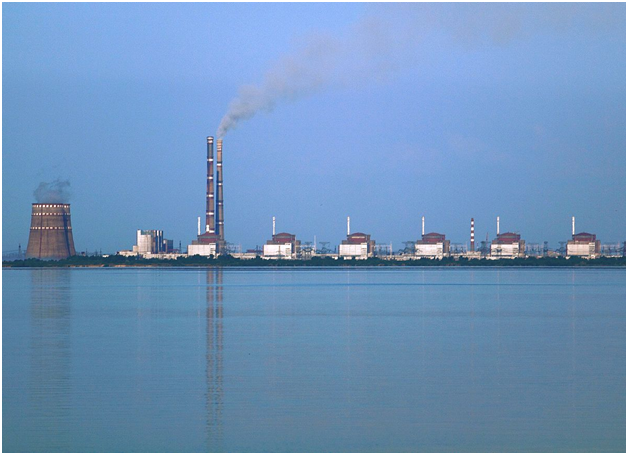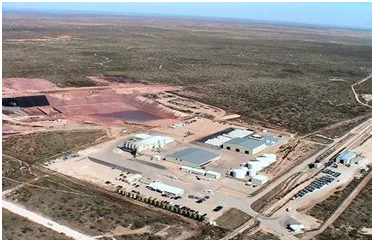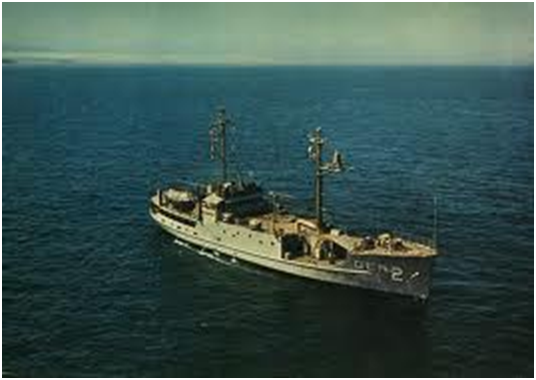
Blog
-
Geiger Readings for January 31, 2013
Ambient office = 106 nanosieverts per hourAmbient outside = 79 nanosieverts per hourSoil exposed to rain water = 79 nanosieverts per hourRed seedless grapes from Top Foods = 91 nanosieverts per hourTap water = 129 nanosieverts per hourFiltered water =109 nanosieverts per hour -
Nuclear Reactors 100 – Threats Against Nuclear Reactors in Ukraine
There are many different important issues when considering nuclear power. I have spent a lot of time on the threat nuclear weapons and the environmental, health, technical and economic issues of nuclear reactors. I have posted blogs that dealt with the possibilities that terrorists could target nuclear reactors and/or nuclear waste storage. I have even mentioned that if Russia succeeds in building reactors in third world countries, they could apply economic pressure to those countries by threatening to shut off the reactors if the other countries do not comply with Russian demands. Of course, nuclear reactors would be prime targets in wars because they would deny the enemy huge amounts of electrical power. But recently, there have reports of the possible role of nuclear reactors in the internal power struggles with in a single country. This is a subject that I have not covered.
There is a complicated struggle for control of Ukraine. The President and the recent government have been oriented toward cooperation with the Russians. The mass of the people are fed up with Russian interferences in the affairs of Ukraine and would like to turn toward Europe and the European Union for economic assistance. For weeks there has been a battle between police and government security forces and protesters in Ukraine. It has been becoming increasingly violent as both sides dig in for what must be seen as the possible opening battles of a full out civil war. A few days ago, the Ukrainian President accepted the resignation of the whole government in an attempt to appease the protesters after an attempt to buy them off with promises of participation in the government failed.
The Security Service of Ukraine has issued a statement with respect to the on-going conflict. They say that anonymous parties have threatened to sabotage critical infrastructure in Ukraine unless their demands are met. Along with threats to bomb hydroelectric power installations, there have also been threats against the nuclear power plants in Ukraine. There are currently four nuclear power plants in Ukraine with fifteen operating reactors. I have blogged about the vulnerabilities of nuclear reactors to attacks in the past. Reactors are highly complex machines which can be directly stopped or destroyed in many ways. They store spent nuclear fuel which would be an excellent target for a saboteur. All reactors require a huge amount of cooling water, the blocking of which is another way that reactors could be stopped.
Blowing up a reactor in Ukraine would cause widespread environmental devastation, public health impacts and economic disaster. While it is difficult to understand the logic of a protester who would do such a thing to their own country, it should never be doubted that there are such people in all societies. If Ukrainian reactors are attacked, it will be the first use of nuclear terrorism in a civil war. And, the damage would reach far beyond Ukraine into other countries in the area.
Zaporizhia Nuclear Power Station in Ukraine, the biggest nuclear power plant in Europe:
-
Geiger Readings for January 30, 2013
Ambient office = 74 nanosieverts per hourAmbient outside = 80 nanosieverts per hourSoil exposed to rain water = 65 nanosieverts per hourHoney Crisp apple from Top Foods = 83 nanosieverts per hourTap water = 76 nanosieverts per hourFiltered water = 65 nanosieverts per hour -
Radioactive Waste 51 – Waste Control Specialists in Andrews County Texas 1
Harold Simmons, who died in December of 2013, was a Texas billionaire who established a site for disposing of radioactive waste in West Texas. Simmons made his money in garbage collection, drug stores, metals and chemicals. He has been called the “King of Superfund Sites.”
Simmons bought a hazardous waste disposal company called Waste Control Specialists (WCS) and started working on the nuclear dump in Andrews County. Texas has very lax controls on environment pollution with people from polluting companies sitting on regulatory boards. After six years of lobbying, Simmons convinced the Texas legislature to pass a law authorizing private companies like his WCS to be granted licenses to store radioactive waste.
WCS immediately started the process of obtaining two licenses that would allow it to store a total of sixty million cubic feet of low-level radioactive waste from Federal and state sources. The acceptable types of waste come from places like nuclear reactor operations, nuclear laboratories, and hospitals. One benefit of staying with the low-level wastes is that it is not necessary to go through the time consuming and expensive process of getting Federal approval for storage of high-level nuclear waste such as spent fuel rods from nuclear reactors.
There was resistance from against issuing the licenses by environmentalists and some state authorities. State engineers and geologists raised the concern that radioactive materials could leach out of the dump site into the ground water. In a memo from 2007, four staffers from the Texas Commission on Environmental Quality (TCEQ) stated that because the site was close to the water table in that part of Texas, it “makes groundwater intrusion into the disposal units highly likely.” Three staffers at the TCEQ resigned rather than sign off on the license request from WCS. One said “I started getting the idea that these people are going to license this thing no matter what. I felt that in clear conscience I couldn’t grant a license with what was being proposed.” The director of the TCEQ quit in 2008 and became a highly paid lobbyist for WCS. The licenses were granted to WCS in the fall of 2008. Critics said that it was a blatant example of the revolving door between the public and the private sectors and of regulatory capture of an agency by the industry they are suppose to regulate.
Once Simmons had the licenses in hand, he began expanding the storage site. His plan was to move beyond local storage to take waste from all over the United States. There is a growing and lucrative market for nuclear waste storage that he was buying into. Simmons wanted his site to be the biggest in the U.S. Thirty six states do not have permanent disposal sites for their low-level radioactive waste. WCS had signed a contract with Vermont to store their waste. Simmons wanted to expand the contract to take waste from other states. An obscure agency in the Texas government called the Low-Level Radioactive Waste Disposal Compact Commission had the authority to expand the WCS contract. It had seven members, six of whom were appointed by Governor Rick Perry who received a large campaign donation from Simmons. There was widespread opposition to the contract expansion but the Commission approved it and WCS is able to take radioactive waste from other states.
WCS will reap the profits from the nuclear waste disposal but if radioactive materials migrate from the site into the Texas ecosystem including the water table, the Texas taxpayers will have to bear the cost. The WCS case is an excellent illustration of how back room political dealing and campaign donations can trump science and the public interest.
Waste Control Specialists site in Andrews Country, Texas:
-
Radiation News Roundup January 29, 2013
Radioactive cesium in ocean from Fukushima reached 50,000 times the levels seen after Chernobyl. enenews.com
Japanese radioactive rice farmers get big government subsidies. japantimes.co.jp
Two new reactors have been approved to start construction in South Korea this year. world-nuclear-news.org
The Polish government has adopted a revised program for the construction of the country’s first nuclear power plants, which sees two facilities in operation by 2035. world-nuclear-news.org
-
Geiger Readings for January 29, 2013
Ambient office = 135 nanosieverts per hourAmbient outside = 107 nanosieverts per hourSoil exposed to rain water = 101 nanosieverts per hourBaby Gold Potato from Top Foods = 65 nanosieverts per hourTap water = 92 nanosieverts per hourFiltered water = 87 nanosieverts per hour -
Nuclear Weapons 63 – 1968 U.S. Plan to Nuke North Korea
The only nuclear bombs have been used during wartime were the two that were dropped on Hiroshima and Nagasaki by the United States in World War II. However, there have been plans by the U.S. and other countries to use nuclear weapons that were not carried out. Few of these plans were widely publicized and are not known by the public because they were classified military secrets. Every now and then, a particular plan surfaces. This blog post is about one such plan.
In 1968, the USS Pueblo was captured by North Korean. It was a sophisticated electronic surveillance ship being used to intercept electronic communications from North Korea. The US maintains that the Pueblo was in international waters when it was captured but the North Koreans claim that it was in their territorial waters. The crew was held and tortured for over a year. The ship carried a huge amount of U.S. intelligence including devices used to decipher encrypted U.S. military communications.
During this period, the U.S. was concerned that the U.S.S.R and/or China might be involved and have access to sensitive U.S. intelligence and the decoders. There was also concern that North Korea was planning on invading South Korea. Spies and saboteurs from North Korea were very active in that period, crossing the Korean Demilitarized Zone that separate the two Koreas in order to attack targets in the south. Under pressure from the Soviets, North Korea eventually released the crew of the ship which defused the crisis. They did keep the Pueblo.
Some U.S. documents were recently declassified that are related to the Pueblo incident. They concern contingency plans that were drawn up to deal with the capture of the Pueblo and the possibility of a North Korean invasion of South Korea. At the time of the Pueblo capture, the U.S. military called for sending Navy ships to North Korea to intimidate the North Koreans. Unfortunately for that suggested response, the Navy was occupied with the war in Viet Nam and no ships were sent on that mission. So the U.S. military suggested that we invade North Korea. They said that we could use our B-52 high altitude bombers to obliterate the North Korean air force. One problem with these invasion plans is that they would require that the U.S. pull out of Viet Nam completely to free up the twelve divisions of troops and the forty tactical bomber squadrons required. The five different invasion plans were collectively known as “Fresh Storm.”
In addition to the invasion plans, there was a plan to use nuclear weapons. This plan was called “Freedom Drop.” The commander of the U.S. Pacific Fleet had drawn up the plans for the nuclear attack against North Korean military targets. The Chairman of the U.S. Joint Chiefs of Staff approved the plan but there was a delay in relaying that approval to the Pacific Fleet. The plan called for using Honest John rockets and Sergeant missiles to deliver seventy kiloton warhead to North Korean targets. If that plan had been carried out, it would have devastated North Korea, killing millions of people. South Korea would have fallen victim to fallout and other environmental destruction that would have taken many lives. Fortunately for all the people living on the Korean peninsula, the plan was never carried out. The U.S. military is concerned with using weapons to attack enemies. In the U.S., the civilian government controls the military which reduces the possibility of U.S. military action and encourages other approaches to international tension including diplomacy and trade.
U.S.S. Pueblo:
-
Radiation News Roundup January 28, 2013
TEPCO says Fukushima spent fuel removal task is even worse than anticipated. enenews.com
Construction on Vietnam’s first nuclear power plant at Phuoc Dinh in the southern Ninh Thuan province will not commence later this year as previously planned. world-nuclear-news.org
Washington has been pressing Tokyo to return over 300 kg of mostly weapons-grade plutonium given to Japan for research purposes during the Cold War era. japantimes.co.jp
-
Geiger Readings for January 28, 2013
Ambient office = 85 nanosieverts per hourAmbient outside = 81 nanosieverts per hourSoil exposed to rain water = 72 nanosieverts per hourBaby Gold Potato from Top Foods = 132 nanosieverts per hourTap water = 106 nanosieverts per hourFiltered water = 99 nanosieverts per hour






